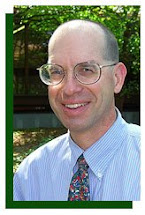
A decade of teaching and learning leadership skills. In 1996, I was asked to participate on the adult staff of a leadership training course for young men. While at that course, although I certainly enjoyed the experience, I would not have predicted that I would continue volunteering my vacation time for similar leadership training courses for every year since that time. This summer I will be part of the adult staff for my 10th course in Missouri. I'll also be involved in my sixth course at the national level, working with youth for an advanced experience at the Philmont Training Center in New Mexico.
Servant leadership is a concept about helping others. The training syllabus that we use has changed since 1996. In the 90s, it focused more on the rote skills of leadership, including communication, planning, conflict resolution, using resources effectively, and other skills. Today, using some of the best parts of current leadership theory and theories that have stood the test of time, the course is slightly different, with a focus more on broader concepts in addition to skills. One concept is that of servant leadership. Being a servant leader involves many things, and Larry Spears writes that the concept is "one that seeks to involve others in decision making, one strongly based in ethical and caring behavior, and one that is attempting to enhance the personal growth of people while improving the caring and quality of our many institutions." At its simplest, servant leadership is about a focus on the needs of others.
The training syllabus describes the concept as: "The concept of servant leadership encourages leaders to serve others while staying focused on achieving results in line with the organization's values and integrity. Servant leadership emphasizes collaboration, trust, empathy, and the ethical use of power."
This idea of including others in decision making, using an approach that is both ethical and respectful of others point-of-view, is what using human dimensions and public involvement in conservation decision-making is all about.
Human dimensions information is used to help others. Human dimensions helps resource mangers make informed decisions about fish, forest, and wildlife conservation. In Missouri, human dimensions efforts are some of the ways citizen opinions are included in conservation decisions. Human dimensions information helps managers and decision-makers provide conservation programs and services that meet the needs and expectations of Missourians. That is why I believe that human dimensions is servant leadership in action.
"What We Believe" statements of the Missouri Department of Conservation guide actions. Using human dimensions information helps me and the staff of the Missouri Department of Conservation demonstrate our "What We Believe" statements. The second statement is "All citizens are important; we value their trust and their point of view" and the third is "Missourians are our partners to achieve conservation success." The last statement includes: "Our decisions and behavior will be based on fairness, objectivity and the best scientific information."
Excellent public service is what we will provide. I believe that using human dimensions information for conservation decision-making helps achieve the first "What We Believe" statement "Excellent public service is what we will provide." These words in the "What We Believe" statements are very similar to the words I use each summer when teaching about the concept of servant leadership. Using human dimensions information and public involvement to meet the needs and expectations of Missourians for fish, forest, and wildlife in Missouri looks exactly like servant leadership to me.


No comments:
Post a Comment